University of Michigan:

Noura Ibrahim
Graduate Student Researcher
Noura Ibrahim earned her B.S. in Astronomy from Embry-Riddle Aeronautical University in the spring of 2020 then joined the UM Astronomy graduate program in the fall. Her undergraduate thesis studied the pulsating star in eta Carinae using BRITE-Constellation photometry. Her current graduate research works to characterize the inner AU of the accretion disk around V1295 Aql using CHARA/MIRC-X data along with existing VLTI/PIONEER data.

Jacob Ennis
Undergraduate Student
Jacob Ennis is an undergraduate student at the University of Michigan, pursuing a degree in Physics. He has worked on instrumentation and automation of polarization controllers which will be used on both the MIRC-X and MYSTIC instruments.

Rachael Roettenbacher
51 Peg Postdoctoral Fellow
Rachael Roettenbacher earned her PhD from the University of Michigan in 2016. Her work focused on imaging spotted stars, using a variety of data, including interferometric and space-based photometric observations. She was a Yale Center for Astronomy and Astrophysics Postdoctoral Fellow at Yale University then a 51 peg fellow at Yale and University of Michigan. Rachael continues to image spotted stars, while also investigating manifestations of stellar magnetic activity in photometric archives. This work is important for understanding stellar magnetism and for better calibration of exoplanet detection techniques, such as the radial velocity and transit methods.
http://rmroettenbacher.github.io/
Former UM Group Members:

Tyler Gardner
Postdoctoral Researcher
Tyler Gardner graduated with a Physics degree from Truman State University in 2016. His undergraduate research work included classifying eclipsing binary systems from their lightcurves, measuring rotation rates of asteroids, and exploring the habitability of nearby star systems. Tyler was a graduate student at University of Michigan, where his research is focused on using precision measurements from interferometry to study exoplanets.
Currently, Tyler is a postdoctoral research at the University of Exeter.

Evan Rich
Visiting Professor
Dr. Evan Rich came to the University of Michigan in 2019, after receiving his Ph.D. from the University of Oklahoma. His graduate work included investigating morphologies and illuminations of protoplanetary disks in the near-IR. As a postdoc at UM, he analyzed and modelled polarized light observations of protoplanetary disks around Herbig Ae/Be stars observed with the Gemini Planet Imager (GPI).
Current, Dr. Rich is a visiting professor at Carleton College.

Ben Setterholm
Research Scientist
Ben Setterholm joined the UM Astronomy graduate program in 2016 after graduating from the University of Minnesota. He is currently working on imaging dust around Herbig Ae/Be stars using the CHARA interferometer and the Gemini Planet Imager (GPI) . Ben will also play a key role in the construction and commissioning of MYSTIC, the Michigan Young Star Imager at CHARA.

Andrea Lin
Graduate Student
Andrea Lin was anundergraduate at the University of Michigan, receiving degrees in Astronomy & Astrophysics and Physics. She now is a graduate student at Penn State.

Evan Scott
Undergraduate Student
Evan Scott is an undergraduate at the University of Michigan pursuing a degree in Computer Science. He is currently working on testing machine learning algorithms to minimize error in transit spectroscopy measurements of exoplanets, through using these algorithms to predict flux from stars during exoplanet transits.
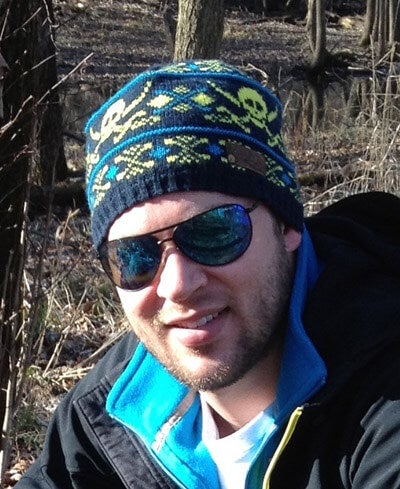
Matt Anderson
Graduate Student
Matt Anderson graduated with a BS in Astronomy and Astrophysics from the University of Michigan in 2013. At UM, he worked on a number of projects with Professor Monnier, including building an infrared camera for testing integrated optics components and carrying out experiments combining broadband infrared light using long (~300meter) optical fibers. Matt is now a graduate student in Astrophysics at Georgia State University.
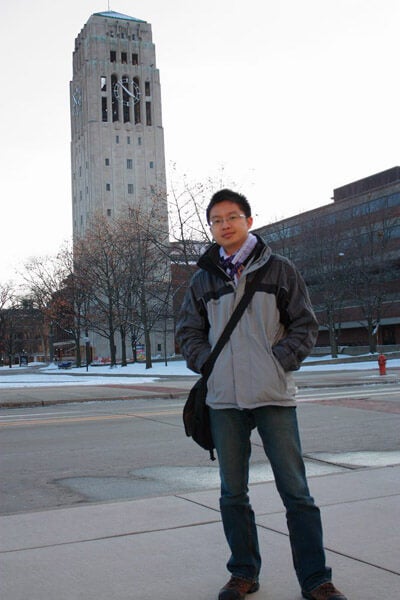
Xiao Che
Financial Software Developer
Following graduation from Tsinghua University (Beijing), Xiao Che came to the University of Michigan in 2008 and earned his PhD in Astronomy in 2014. He was responsible for a number of important instrument upgrades at CHARA, including MIRC photometric channels and moving to a full 6-telescope system. Most recently, Xiao built the CHARA Adaptive Optics Wavefront Sensor system. Scientifically, Xiao wrote papers on imaging rapid rotators and Be star binary systems. After graduation, Xiao took a job in financial industry, and is currently at Verition Group as a software engineer.
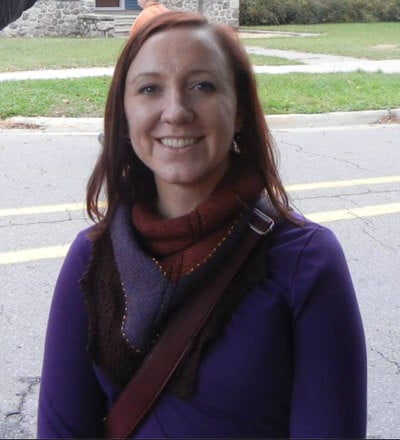
Alicia Aarnio
George Ellery Hale Fellow
Dr. Alicia Aarnio came to the University of Michigan in 2010, following receiving her Ph.D. from Vanderbilt. As a postdoc and then assistant research scientist at UM, she worked on optical spectroscopy and radiative transfer modeling of Herbig AeBe stars. In 2016 she moved and is now the George Ellery Hale Fellow of Solar and Space Physics at the University of Colorado Boulder. In addition to her continued work with John on Herbigs, she is researching stellar magnetic activity and evolution using the solar-stellar connection. You can find her research website here: http://aliciaaarnio.solar/stellar

Fabien Baron
Assistant Professor
Fabien Baron received his PhD from University Pierre et Marie Curie in 2005. After a postdoctoral position at Cambridge with the COAST group, Dr. Baron joined Professor Monnier's group building the CHAMP fringe tracker for CHARA. Dr. Baron is well-known for his image reconstruction work, crossing over from optical interferometry to the Event Horizon Telescope to reverberation mapping. Dr. Baron recently joined the faculty of Georgia State University and is still closely collaborating with John on a number of projects at CHARA, including imaging Young Stellar Objects, red supergiants, and magnetically-active stars.
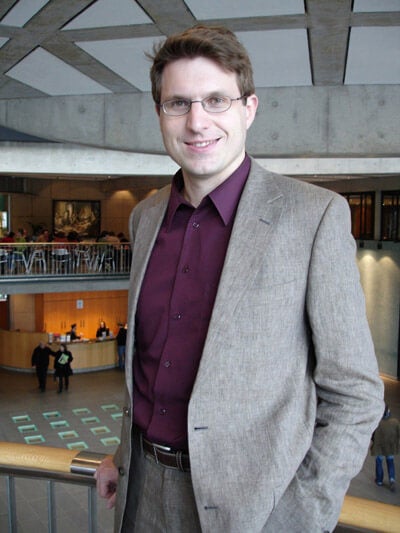
Stefan Kraus
Lecturer
Dr. Stefan Kraus received his PhD from the University of Bonn in 2007. He came to University of Michigan in 2009 as a NASA Sagan Fellow and is now a Lecturer in Astrophysics at Exeter (Homepage). Dr. Kraus works on detailed studies of circumstellar disks around young stars, with the goal of unveiling the earliest stages of planet formation. He is also the Project Scientist of the Planet Formation Imager Project, leading the Science Work Group (SWG).

Phil Muirhead
Assistant Professor
Phil Muirhead was an undergraduate at the University of Michigan, where he first got involved with astronomical instrumentation. Phil went on to receive his PhD from Cornell and is now an assistant professor at Boston University engaged in a number of research programs aimed at understanding the variety of extrasolar planets orbiting low-mass stars.

Ettore Pedretti
Postdoctoral Research Fellow
Dr Ettore Pedretti is an EPSRC Interdisciplinary Research Collaboration PROTEUS Postdoctoral Research Fellow.
Ettore Pedretti played a key role in developing the data acquisition system and camera readout for the MIRC combiner during his Michelson Postdoctoral Fellowship at the University of Michigan. He earlier worked at the GI2T and IOTA interferometers. Ettore is currently a EPSRC Interdisciplinary Research Collaboration PROTEUS Postdoctoral Research Fellow at Heriot Watt University with a particular interest in developing complex instrumentation and will apply his passion for this within the PROTEUS project by using optical interferometry to observe bacteria in the distal lung.

Ajay Tannirkulam
Founder and Director, Magasool Group of Organizations
Ajay Tannirkulam completed a PhD in Astronomy and Astrophysics in Prof. John Monnier's Group at the University of Michigan, Ann Arbor, USA in 2008. He then joined the Center for Microfinance (CMF) – Insitute for Financial Management and Research (IFMR) as the head of the Analytics Unit.. He kept additional charge as the Interim Executive Director of CMF between 2011 and 2013. His interest in agriculture made him spend time in the field to understand challenges faced by farmers. Along with Jayaram Venkatesan, Ajay founded Magasool (meaning "yield" in Tamil) in 2012. Magasool is working to make agriculture viable for small and marginal farmers.
Between, 2016 and 2018 he served as co-founder and Director of HyperWorks Imaging Pvt Ltd - a startup aiming to automate no-destructive quality testing of Indian fruits and vegetables using hyper-spectral imaging and machine learning. Since 2018, Ajay has been exploring ways to commercially provide onsite, low-cost, pesticides, fungal-toxins and heavy-metal detection services for small farmers.
WhatsApp: +91 9445392454
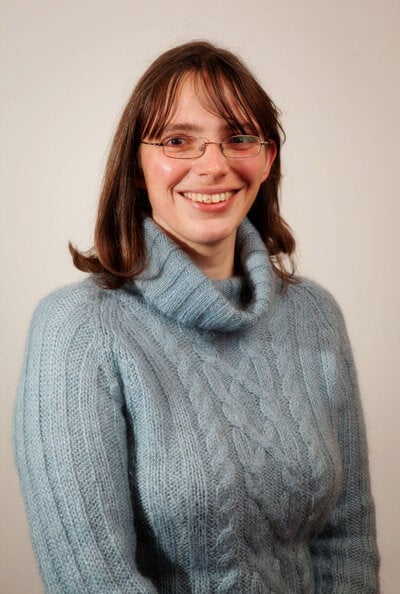
Nathalie Thureau
Research Fellow
Nathalie Thureau earned her PhD working in France on the GI2T Interferometer. She worked at the University of Michigan as a Marie Curie Fellow and was instrumental to the development of the MIRC combiner. She now is working at the University of St. Andrews, most recently analyzing Herschel observations of debris disks.

Ming Zhao
Software Engineer at Google
Ming Zhao was a graduate student at the University of Michigan, having received a Michelson Graduate Student Fellowship. After an NPP Fellowship at NASA-JPL, Ming worked at Penn State as a research scientist on characterization studies of exoplanets. After that Ming started a new career in the industry as a Data Scientist at the New York Times. He is now a software engineer at Google AI.
Active Collaborators from around the World:

Narsi Anugu
Postdoctoral Researcher
Narsireddy Anugu earned his Ph.D. by involving in the successful development of VLTI/GRAVITY in 2017 working in Portugal. Anugu is currently a postdoctoral fellow at the University of Exeter, the UK since 2016. Being part of Exeter and UM groups, Anugu played an important role in the sensitivity upgrade of MIRC and involved in the development of MYSTIC and CHARA adaptive optics instruments. These efforts aimed at observing discs around faint young stellar objects with near-infrared interferometry.

Jean-Baptiste le Bouquin
Astronomer
Jean-Baptiste Le Bouquin is an Astronomer at University of Grenoble-Alpes, detached at the University of Michigan from 2017 to 2019. For 15 years, he has been continuously involved in the development of optical interferometry, and its use for front-line observation in stellar physics. At the Very Large Telescope Interferometer (ESO), Jean-Baptiste was the PI of the instrument PIONIER, and helped bring to a success the recent observations of the black hole at the center of the Milky Way with the GRAVITY combiner. Jean-Baptiste is now focused on the installation of the MIRCX+MYSTIC instruments at the Center for High Angular Resolution Array, whose emphasis is to image the region where terrestrial planets form around young stars.

Cyprien Lanthermann
Graduate Student
Cyprien graduated with his undergraduate degree in Astronomy from Grenoble University. He is now continuing at Grenoble for his PhD, spending 9 months at the University of Michigan. Cyprien's thesis work will focus on the calibration of the e-APD detectors of MIRCX and MYSTIC while taking advantage of the improved sensitivity to characterize the multiplicity of distant massive binary stars using CHARA.

Anna Laws
Graduate Student
Anna is a PhD student at the University of Exeter, having previously graduated from the University of Southampton with an integrated master's degree in Astrophysics. She is currently visiting the University of Michigan on a four-month attachment where she is working on transition discs imaged with the Gemini Planet Imager (GPI). Anna’s thesis will involve the structure of transition discs based on observations and radiative transfer modelling.

Jean-Philippe Berger
VLTI Programme Scientist
Jean-Philippe Berger has been developing integrated optics combiners for interferometry since his PhD at Grenoble. During a Michelson Postdoctoral Fellowship at the Harvard-Smithsonian Center for Astrophysics, JPB commissioned the revolutionary IONIC3 combiner of the 3-telescope IOTA system, allowing IR imaging for the first time and new breakthrough results on young stellar objects. JPB has gone on to a permanent position in Grenoble where he helped to bring online the 4-telescope instrument PIONIER to the VLTI. Recently, JPB has taken leave from Grenoble and has been working at ESO, now as the VLTI Programme Scientist.

Alexandre Gallenne
Fondecyt Fellow
Alexandre Gallenne received his PhD in Astronomy and Astrophysics from the University Pierre & Marie Curie (Paris, France) in 2011. His scientific interests include circumstellar envelopes of Cepheids, high angular resolution techniques, and the galactic/extra-galactic distance scale. Dr. Gallenne and Professor Monnier are working together on a Binary Cepheid program using the upgraded MIRC6 combiner that can now detect faint (>200:1) companions to bright stars in conjunction with Hubble Space Telescope FGS observations.

Tim Harries
Associate Professor
Tim Harries is a world-expert on radiative transfer, having authored the flexible monte carlo code TORUS. Professor Harries is now an Associate Professor of Astronomy at Exeter. I met Tim at a Wolf-Rayet conference (2000) and we have worked together since then on a number of projects, most recently on modelling polarized dust emission around young stars and spectral line modeling Herbig Ae/Be star winds.

Michael Ireland
Future Fellow
Mike received his PhD in 2005 from the University of Sydney, working on the SUSI Interferometer as well as modelling of AGB atmospheres. Dr. Ireland went on to work as a Michelson Postdoctoral Fellow at Catlech, where he developed aperture masking techniques and also the innovative visible-light PAVO combiner at CHARA. Mike later worked as a Lecturer in Astrophotonics at Macquarie University from 2011-2014, during which time he was the Project Scientist on the Australian Astronomical Observatory’s bid for the Gemini High-Resolution Optical Spectrograph. Mike recently moved to Australian National University as a "Future" Fellow where he continues to use novel instrumentation and techniques, including the world’s largest telescopes and optical interferometers, to search for planets around other stars, and to study the life cycle of stars.

Antoine Merand
VLTI Programme Scientist
Antoine Mérand received his PhD in Astronomy from Paris University (France) in 2005. In 2006, he moved to the CHARA Array interferometer (operated by Georgia State University, USA) to work on instrumentation developments and to complete observation programs he started during his PhD. In 2008, he joined ESO in Chile as an operations astronomer at VLTI. He has been instrument scientist for AMBER and PRIMA, as well as VLTI System Scientist. In 2017, he transferred to ESO headquarters in Germany to serve as VLTI Programme Scientist. His main research interests are determining distances to Cepheids pulsating stars, and stellar fundamental parameters in general using various observational techniques, but most prominently optical interferometry.

Rafael Millan-Gabet
Instrumentation Scientist
Rafael Millan-Gabet received his PhD from UMass-Amherst in 1999, making the first near-IR interferometric observations of Young Stars using the IOTA Interferometer. He was awarded the first Michelson Postdoctoral Fellowship at the Harvard-Smithsonian Center for Astrophysics. Rafael went on to make major contributions to the Keck, CHARA, and Large Binocular Telescope Interferometers, as staff scientist at the NASA Exoplanet Science Institute (NExSCI) at Caltech. Rafael is now the Instrumentation Scientist at the Giant Magellan Telescope (a short–baseline Fizeau interferometer).

Gail Schaefer
Research Scientist
Gail Schaefer received her PhD in 2004 from SUNY-Stony Brook. She is a leader in using high angular resolution observations for close binary stars, especially in young systems and for Be stars. She is currently working at the CHARA Array on Mt. Wilson as a research scientist. Dr. Schaefer was recently the first author on a Nature paper that provided the earliest images of a Nova explosion.

Theo ten Brummelaar
Director of the CHARA Array
Theo ten Brummelaar received his PhD from University of Sydney in 1993 working on the SUSI Interferometer. He went on to be a primary architect of the Georgia State University CHARA Array, the largest baseline optical interferometer in the world and is currently the Director of the CHARA Array, working on-site at Mt. Wilson. Theo and John work closely together on many instrumental projects at CHARA, with current strong focus on the CHARA Adaptive Optics upgrade.


